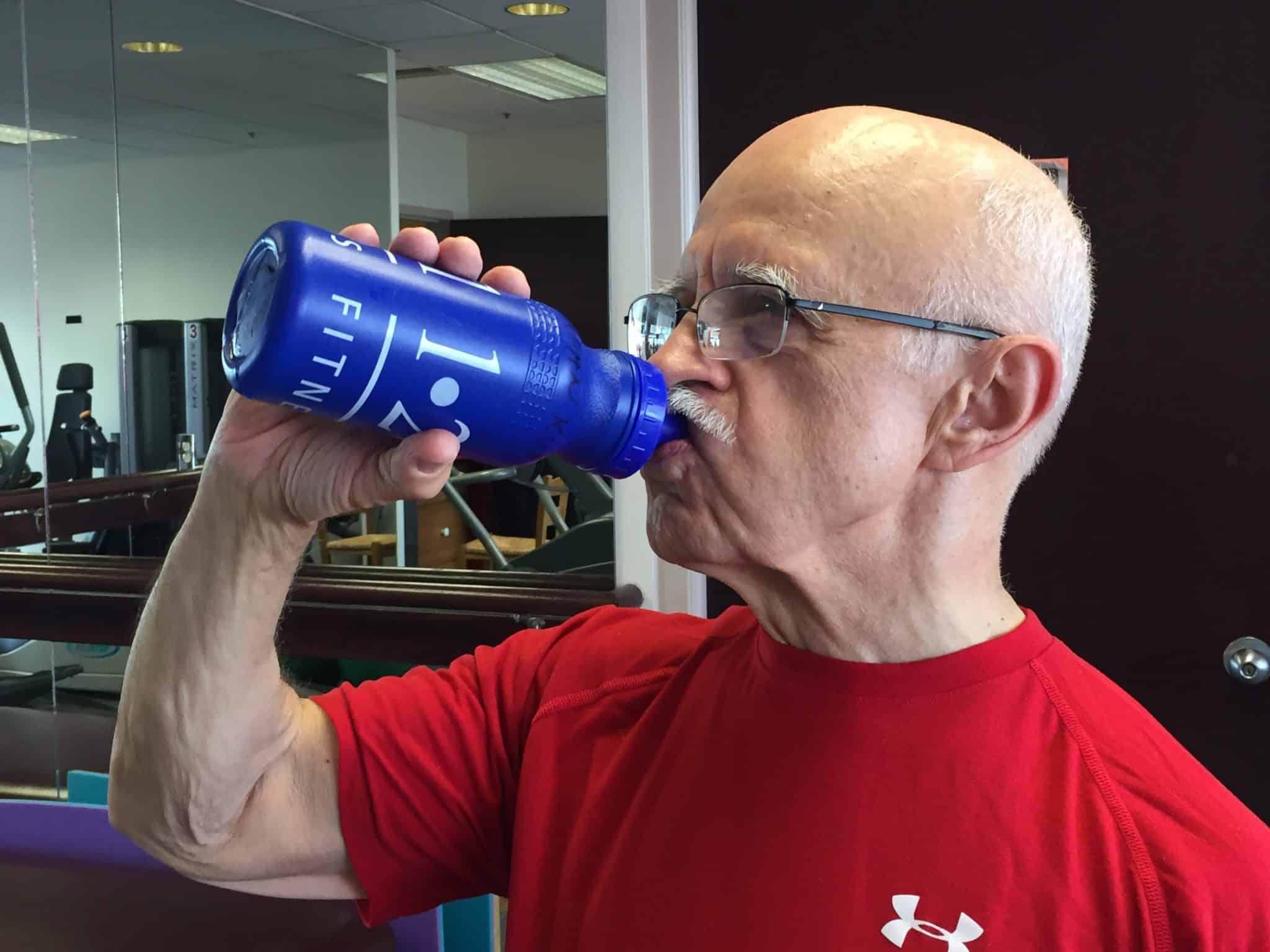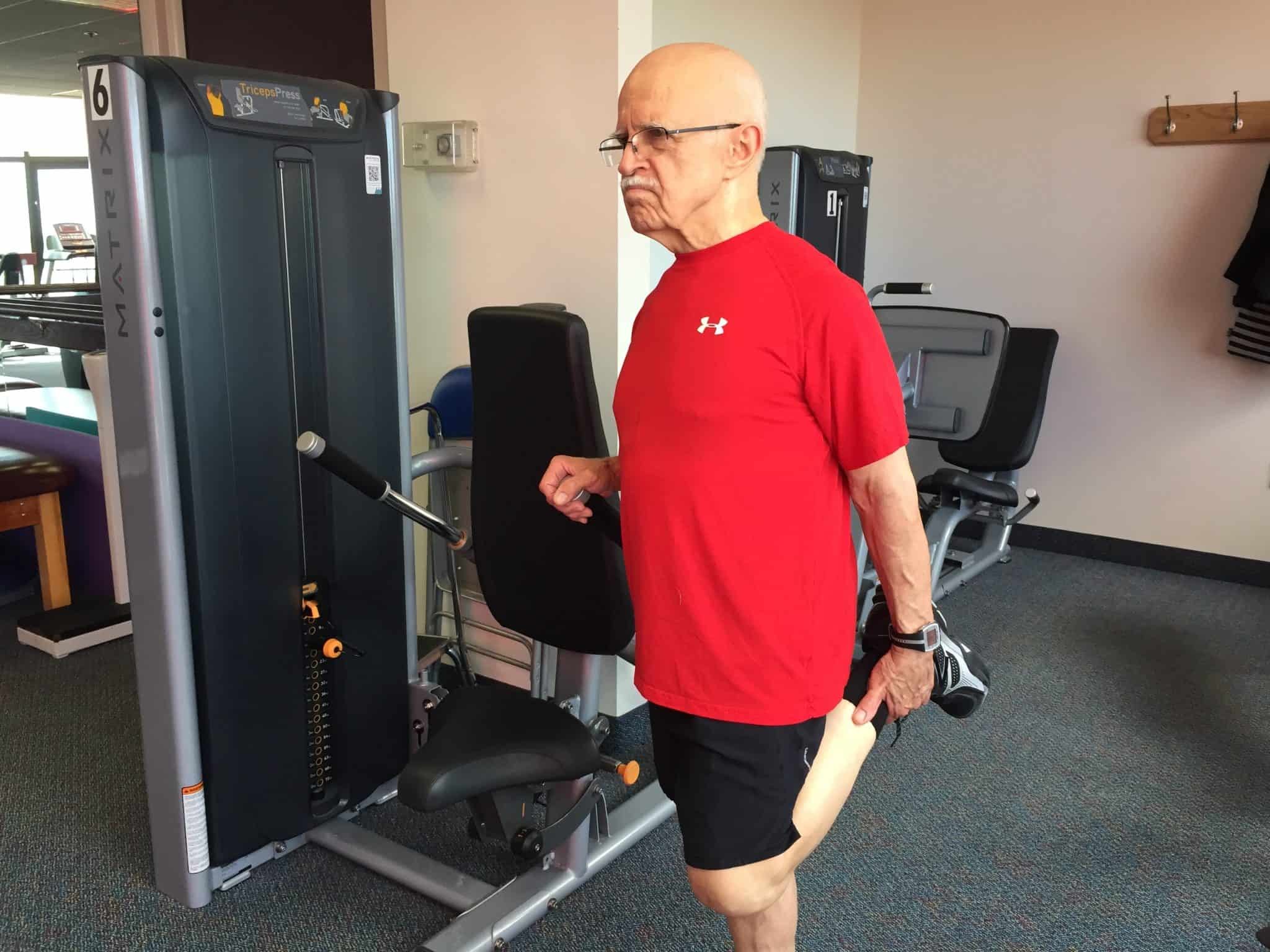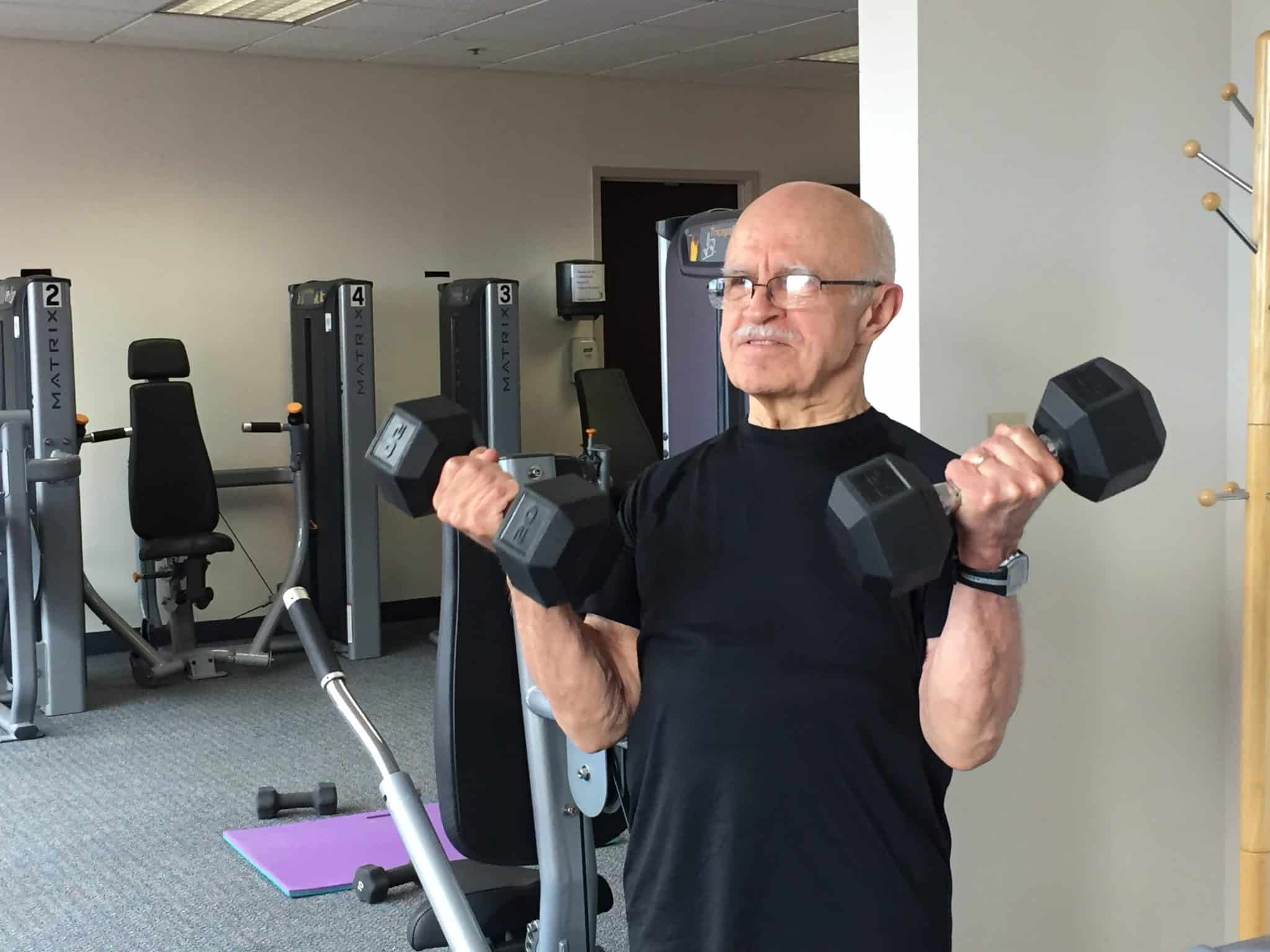“The problem is, people decide they need to get into shape, but they want to be in shape tomorrow,” Frank says. “They want a quick fix and start by doing too much, too hard, too fast and too soon.” Then they injure themselves or just lose motivation, “so they quit trying altogether.”
But you can stay robust into your later years without all of that angst and suffering.
Here, Frank shares his top seven health strategies for men as they grow older:


Once you get used to getting enough fluids, you want to continue because, “everything works better when you’re hydrated,” Frank says. “Your metabolism works better, your brain works better, your joints work better, even your eyes work better” because the aqueous humor (the clear fluid in front of your eyeball) is there, making your eyes function.
The biggest reason people don’t drink all the water they need is because they see it as a job. “You get this vision of sitting at a table with eight glasses of water in front of you, and you think, ‘how could I possibly drink all of it?’” The answer is, you don’t – not even a full glass at once. Frank’s tip is, “a bit personal,” but it works: every time he visits the restroom, he takes five big sips of water. “It’s incredibly simplistic, but it helps you to maintain those fluids.” And, he adds, any fluid counts, even coffee. “I wouldn’t recommend eight cups a day, but if you drink a cup or two, count it.”
One remedy, Frank says, is physical activity. “Hard work is good for all of us; digging ditches for a living is far superior, health-wise, to a stressful office job.” A good cry or laughing creates the same effect on stress – the release of endorphins, sometimes called “happy hormones,” that allow our bodies to relax.
“Everyone has to have a formal stress management ‘program,’” Frank says, “whether it’s bowling, volunteering at your church, or playing cards with friends. We’re so inundated with stressors in our lives, we really need a plan for combating them.”
Back in the 1920s, the government started tracking our calorie consumption and body weight. In that decade, we ate far more calories than we do now, but weighed less. “We were much more active. Now we use a clicker to change channels, we drive to the grocery less than a mile away – we live in a world of convenience,” Frank says.
But the body is meant to move. “It responds so much better when we lead an active lifestyle, and cardiovascular exercise – cycling, swimming, aerobic dancing – gives us strong heart and lung muscles. We’re healthier.” The key is to pick the right exercise. Frank advises older men to get good instruction from a personal trainer or therapist, then “do 30 percent of what you think you can do. People say, ‘I’ll start by walking a mile,’ or ‘I want to walk 10,000 steps’ – but why?” Frank says older men (and everyone) starting an exercise plan should, “absolutely rid your mind of any distance or time requirement. Go for a walk, and when you feel you’ve hit 30 percent of what you can do, then you decide to stop. Go home, record the distance you traveled or the amount of time you exercised on your calendar, and do 30-to-60-seconds more after giving yourself a day in between to rest.


Three major muscle groups stabilize our knees: the quadriceps (in front of the knee, keeping the kneecap aligned with the center line of the femur); hamstrings (the muscles behind the thigh, supporting the back of the leg); and calf muscles. And you don’t need a gym or exercise equipment to strengthen those muscles. Quarter squats and leg curls are good for building quads and hamstrings. For calf muscles, Frank says, “simply stand on a step and raise yourself up and down until you feel a stretch in your calf. Those three exercises will keep your joint as strong as possible.”


Just get started, Frank says, and diversify – especially with your exercises. “Take it from a wellness expert who works out every day, exercise can be boring,” he says. I hear people say they hate it, then look at me as if to say, ‘You probably think less of me now…’ But exercise is boring. The trick is to try mixing it up with different activities, and get a training partner. That alone will make a 1-hour workout seem like 20 minutes.”
Don’t dread the boredom – plan on it. Manage it. And most importantly, he adds, “know that it is impossible to start too slowly, and it is impossible to progress too slowly. To paraphrase Woody Allen, success comes from showing up. Just show up and start.”
Note: We thank Judson Park resident Don Kuhn for serving as our “model.” You can read about how Don used exercise to prepare for knee-replacement in our next post on Thursday.